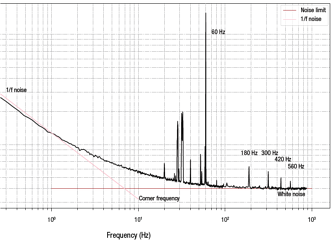
Measurement of electrical signals, voltage, and current is one of the most important methods used by researchers to characterise electronic materials. But electrical signals are often at very low levels and in the presence of noise — which can be as large as or even larger than the signal itself.
Because DC measurement instruments cannot easily extract the signal from the noise, AC measurement techniques are often used. They can modulate the signal with a frequency to measure the signal in the presence of less noise. The lock-in amplifier can perform such a measurement and is one of the best methods for measuring amplitude and phase of AC signals. For these reasons, it is the instrument of choice for low-level measurements of AC signals.
A better way to extract your signal from the noise
The new app note discusses lock-in amplifiers in general and examines how the lock-in technology employed in a new, modular source measure architecture deals with removing the effects of noise from the measurement. It details how the new M81-SSM architecture offers:
Filters designed to remove noise and decrease measurement time
Multiple measure options, with the flexibility of measurement configurations
Multiple source modules, which can be matched to measurement requirements
https://qd-uki.co.uk/the-lock-in-amplifier-explained-and-reimagined/






